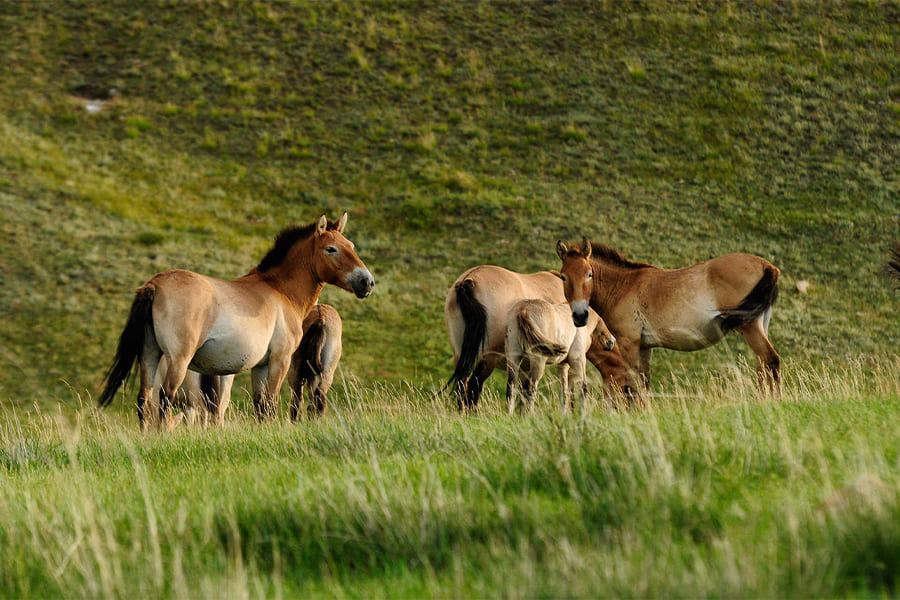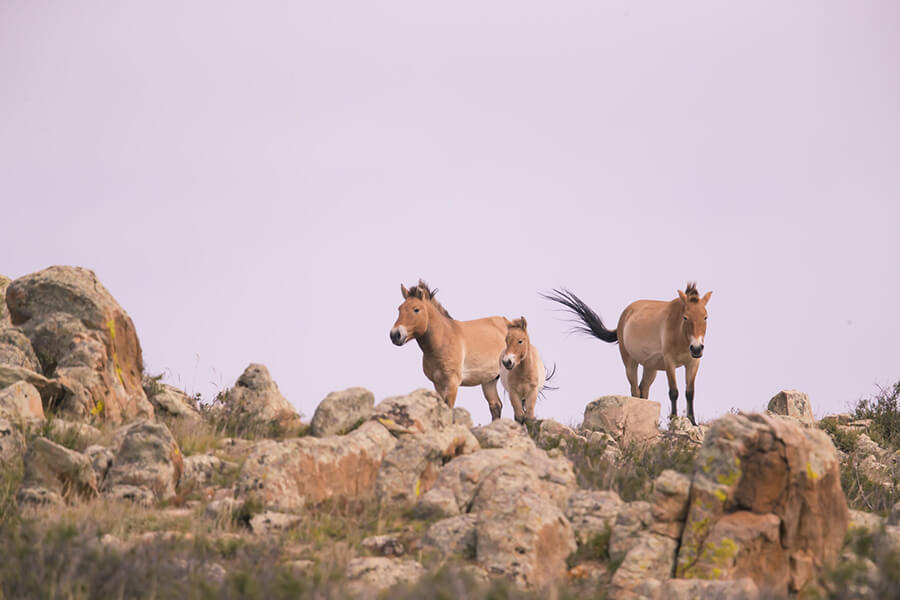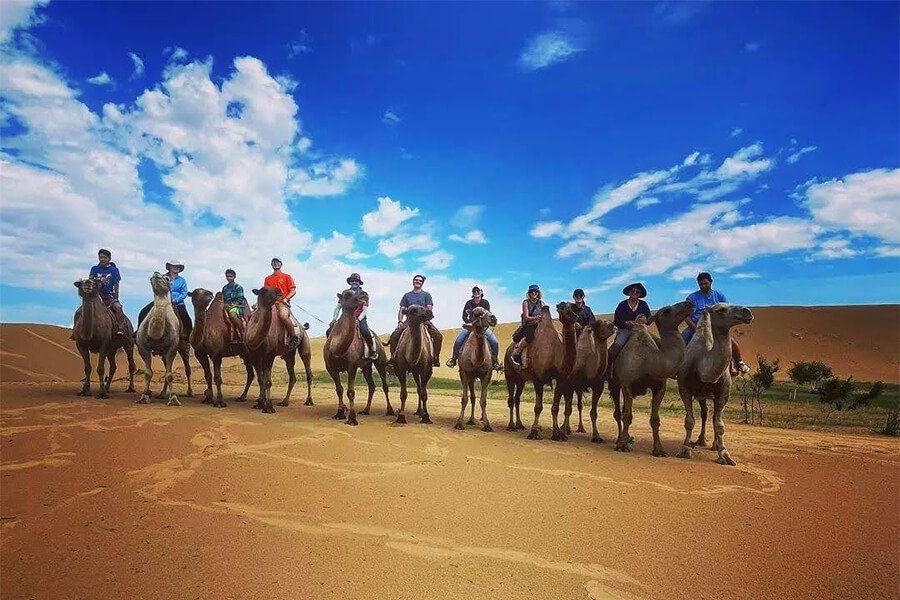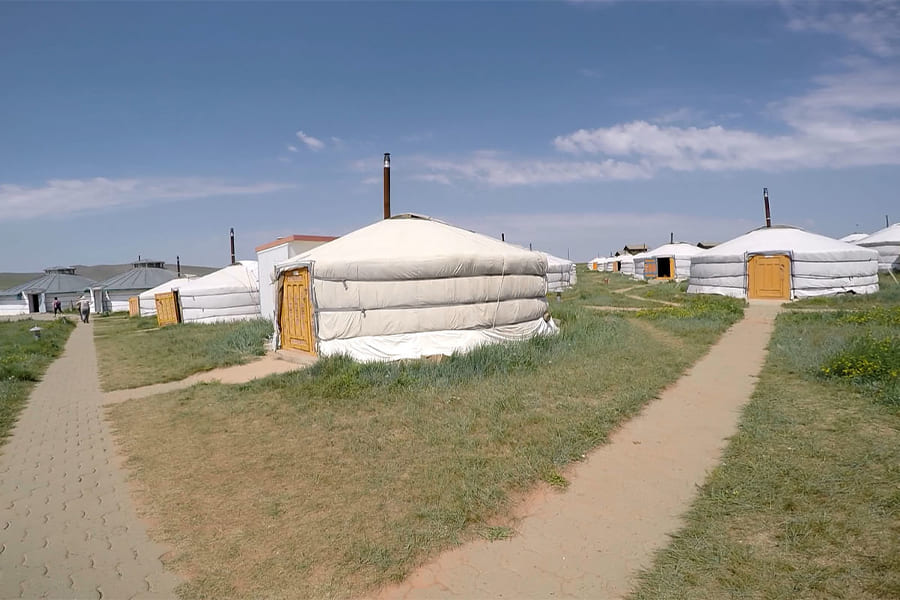Hustai National Park, a UNESCO-recognized biosphere reserve, is a jewel of Mongolia’s natural and cultural heritage. Located in the heart of the Mongolian steppe, this protected area is renowned for the successful reintroduction of the Przewalski’s horse, or takhi, the world’s only truly wild horse. Spanning 50,600 hectares of rolling hills, grasslands, and forests, Hustai National Park offers a unique blend of wildlife, stunning landscapes, and nomadic traditions.
Often featured in a Mongolia travel package, the park is an ideal destination for those looking to explore the country’s unspoiled beauty. This article explores the park’s location, weather, activities, entrance fees, and travel logistics, providing a comprehensive guide for visitors seeking an unforgettable adventure.
Where is Hustai National Park Located?
Where is Hustai National Park located? The park lies approximately 100 km west of Ulaanbaatar, in Töv Province, nestled in the lower spurs of the Khentii Mountains. Covering the boundaries of Altanbulag, Argalant, and Bayankhangai soums, it extends into the Tuul River valley, which flows toward Lake Baikal in Siberia.
The park’s coordinates range between 47.35–47.52°N and 105.40–106.37°E, with a compact area of 34 km east-west and 26 km north-south. Its proximity to the capital makes it an accessible destination for day trips or overnight stays, offering a glimpse into Mongolia’s pristine wilderness.
Ulaanbaatar to Hustai National Park
Traveling from Ulaanbaatar to Hustai National Park is straightforward, with a drive of about 1.5 to 2 hours on mostly paved roads, though the final 13 km is a bumpy dirt track. The journey covers roughly 100 km, starting with the main road west from Ulaanbaatar, followed by an off-road section to the park entrance.
Private vehicles, rental cars like Suzuki Jimnys, or guided tours are recommended, as public transportation options are limited. For those in Kharakorum, a collective shuttle can be arranged, but pre-booking is advised due to scarce information on public routes. Tours often include stops at nearby attractions like the Moltsog sand dunes.
Hustai National Park Weather
The Hustai National Park weather reflects Mongolia’s extreme continental climate, with distinct seasonal variations. Summer (June to August) brings warm days, with temperatures ranging from 15°C to 25°C, ideal for wildlife viewing and hiking. However, afternoons can be hot, and occasional rain may turn dirt roads muddy, requiring caution.
Spring (April to May) and autumn (September to October) offer cooler temperatures (0°C to 15°C) and vibrant scenery, with wildflowers in spring and golden grasses in autumn. Winter (November to March) is harsh, with temperatures dropping to -20°C or lower, but the frozen landscape allows for unique activities like snow trekking. Checking the Hustai National Park weather forecast is crucial, as conditions can shift rapidly.
What to Do in Hustai National Park
What to do in Hustai National Park ranges from wildlife observation to cultural immersion, making it a haven for nature lovers and adventurers. The park’s main draw is the Przewalski’s horse, reintroduced in 1992 after extinction in the wild. Visitors can spot these majestic animals, especially at dawn or dusk when they descend to the Tuul River. Other wildlife includes red deer, Mongolian gazelles, marmots, wolves, and birds like golden eagles and great bustards. The park’s 459 vascular plants and diverse ecosystems, from steppe to sand dunes, add to its appeal.
Wildlife Viewing
The best times to see Przewalski’s horses are early morning or late evening. Rangers provide binoculars and telescopes for distant sightings, as the horses often roam hilltops. Visitors may also spot Altai wapiti, argali sheep, or Pallas’s cats. Guided drives or hikes along the park’s 36-km or 80-km trails offer the best chances to observe wildlife.
Hiking and Horseback Riding
Hiking through Hustai National Park’s rolling steppes and birch forests is popular, with trails offering panoramic views from ridges. Horseback riding, a nod to Mongolia’s nomadic heritage, allows exploration of remote areas. Both activities are guided to protect the park’s ecosystem.
Cultural Experiences
Visiting nomadic families near the park provides insight into Mongolian traditions. Guests can enjoy dairy products like airag (fermented mare’s milk), learn about ger life, or participate in activities like archery and felt-making. The park’s visitor center features a museum and a 17-minute documentary on the takhi’s history, enriching the experience.
Hustai National Park Entrance Fee
The Hustai National Park entrance fee is approximately 35,000 MNT (about $10 USD) per person, making it one of Mongolia’s pricier attractions. This fee supports the park’s conservation efforts, including the Przewalski’s horse reintroduction program, as the park operates without state subsidies.
Additional costs may apply for guided tours, binocular rentals, or activities like horseback riding. Donations are encouraged, with options to name a horse foal and receive a certificate. Fees for ger camps, such as Hustai or Moilt, range from 185,000 MNT for locals to 250,000 MNT for foreigners, often including meals and park entry.
Hustai National Park Accommodation
Accommodation at Hustai National Park centers around traditional ger camps, offering an authentic Mongolian experience. The Hustai Tourist Resort, rated a two-flower resort, has 35 gers and can host 100 guests, with amenities like a restaurant, bakery, and sports field. The smaller Moilt camp accommodates 20 guests. Gers feature beds, wood stoves, and shared bathrooms with hot showers, though facilities like toilets may be basic (e.g., pit latrines).
Some camps offer vegetarian meals and breakfast buffets. Luxury options like HS Khaan Resort provide modern cottages with prairie views. Camping inside the park is prohibited to protect wildlife, but wild camping is possible just outside the entrance. Booking in advance is recommended, especially in summer.
Planning Your Visit to Hustai National Park
Visiting Hustai National Park requires preparation due to its remote setting. From Ulaanbaatar to Hustai National Park, guided tours with operators like Escape to Mongolia or Travel Buddies are reliable, often including transport, meals, and activities. Independent travelers can drive but should use offline apps like Maps.me, as Google Maps is less reliable off-road. The park is open from sunrise to sundown, with early morning or evening visits optimal for wildlife sightings. Bring cash, as card payments are limited, and pack for variable Hustai National Park weather, including layers and waterproof gear.
Why Hustai National Park Matters
Hustai National Park is a global conservation success story, having reintroduced over 400 Przewalski’s horses since 1992, making it the largest wild population of this endangered species. Managed by the Hustai National Park Trust, a non-governmental organization, the park balances eco-tourism with preservation, funding research through entrance fees and donations. Its biodiversity, including 44 mammal species and 217 bird species, and cultural ties to nomadic life make it a must-visit. Whether hiking, spotting takhi, or staying in a ger, Hustai National Park offers an unforgettable journey into Mongolia’s wild heart.





